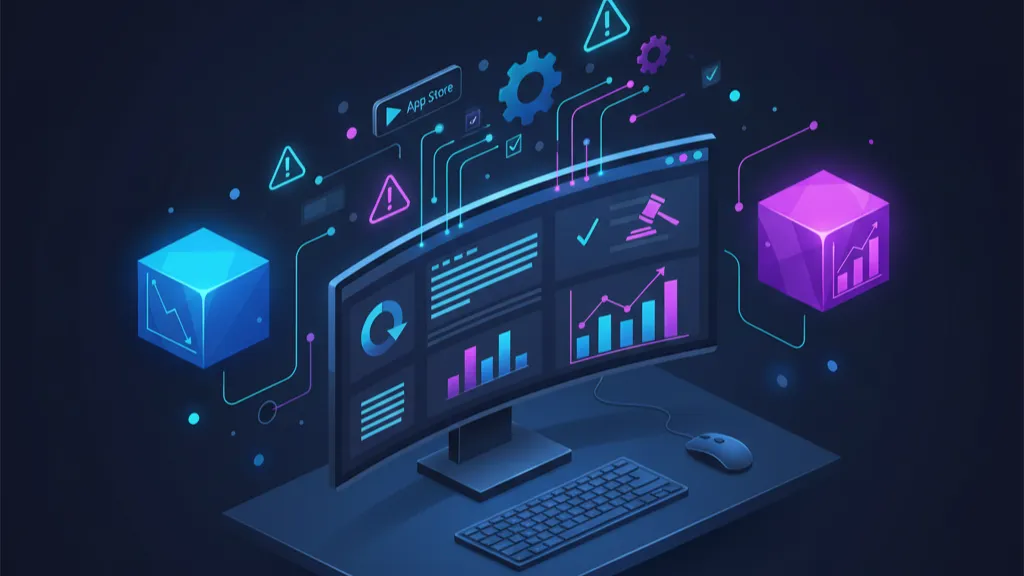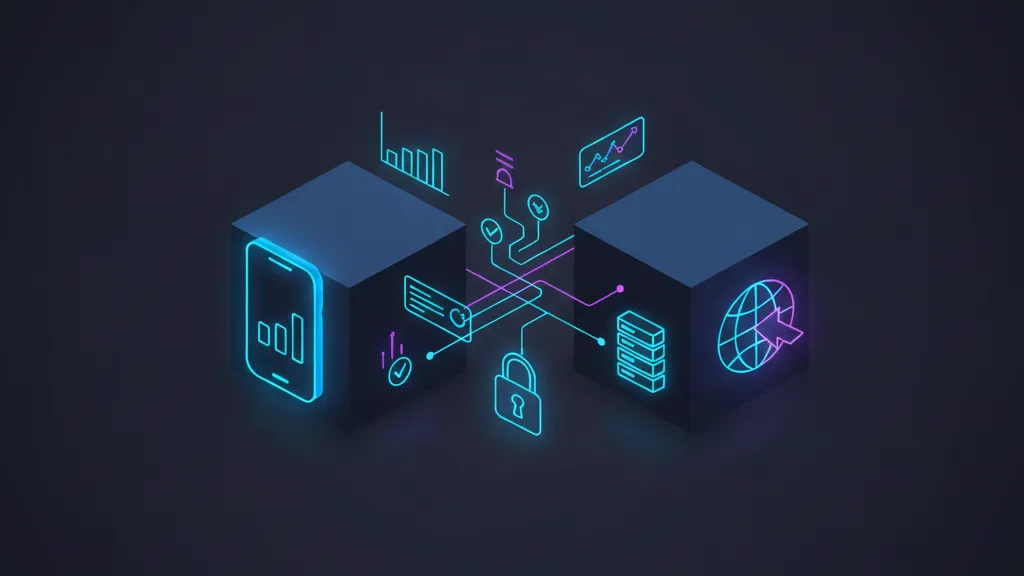The React Native CLI vulnerability is the story of the week for mobile teams. Tracked as CVE‑2025‑11953, it enables unauthenticated command execution against machines running Metro when it’s bound to external interfaces. The patch is available in @react-native-community/cli‑server‑api 20.0.0 (and the umbrella CLI 20.0.0), but the window for opportunistic attacks is still open wherever developers expose port 8081 beyond localhost. This guide gives you a pragmatic, enterprise‑friendly 72‑hour plan to close the gap without breaking your app or your team’s flow.

What exactly changed on November 3, 2025?
On November 3, 2025, maintainers and security researchers published details and a fix for a command injection flaw reachable via Metro’s /open-url endpoint. Affected lines include @react-native-community/cli‑server‑api versions 4.8.0 through 20.0.0‑alpha.2, typically bundled with matching @react-native-community/cli versions. Upgrading to 20.0.0 removes the vulnerable code path. Impact varies by OS: on Windows, arbitrary shell commands with fully controlled arguments; on macOS/Linux, execution of arbitrary executables with more limited parameter control. Either way, if Metro listens on anything other than 127.0.0.1, you’ve got a problem.
Important nuance: this is a development‑time risk. Your production mobile app on user devices isn’t directly exposed by this bug. The danger lives on laptops, workstations, CI runners, and remote dev workspaces where Metro is running and reachable.
Who is actually vulnerable?
You’re vulnerable if ALL of these are true:
• Your project uses React Native with the community CLI (common for greenfield RN projects, RN for Windows, and RN for macOS).
• You run Metro via commands like npx react-native start or npm run ios|android which spin up the server.
• Metro binds to an address other than 127.0.0.1 (default behavior historically allowed external interfaces).
• Your machine is reachable by others on the network (office Wi‑Fi, co‑working, hotel, home LAN, or a forwarded port in a cloud workspace).
Not every React Native app is exposed. If your stack uses a framework that doesn’t rely on Metro as the dev server—or you always pin Metro to localhost—you’re in a safer spot, though you should still upgrade to eliminate risk drift.
People also ask: Is my production app at risk?
No—the exploit targets the Metro development server, not binaries shipped to app stores. But “not production” doesn’t mean “no business impact.” A compromised dev box is a short path to source theft, credential harvesting, malicious commits, or signing key exposure. If you keep keystores, API keys, or provisioning profiles locally, treat this as a material risk.
Your 72‑hour playbook for the React Native CLI vulnerability
Here’s the playbook we’re using with clients. It’s designed for speed and repeatability across multiple repos and teams.
Hour 0–2: Triage fast
1) Identify all projects and machines with the vulnerable package.
Project scan:
npm ls @react-native-community/cli-server-api || yarn why @react-native-community/cli-server-api || pnpm why @react-native-community/cli-server-api
Global scan:
npm ls -g @react-native-community/cli-server-api
2) Map exposure. Ask “Where is Metro reachable from?” If developers use hotel Wi‑Fi, shared co‑working networks, or cloud dev environments with forwarded ports, prioritize them.
3) Create a short incident ticket per repo/workspace listing version, exposure notes, and a target upgrade time. Keep it crisp; you’re executing, not documenting a novel.
Hour 2–8: Contain
4) Bind Metro to localhost immediately on every active dev box—even before you upgrade.
npx react-native start --host 127.0.0.1
If you wrap this in package scripts, add the flag there as well. For remote dev workspaces, disable public port sharing and require VPN.
5) Close the hole at the network edge. Block inbound traffic to 8081 on laptops via OS firewall rules. In offices, segment developer VLANs from guest networks; in cloud workspaces, restrict port forwarding to localhost only.
6) Windows shops: raise priority. The exploit surface is broader on Windows, so finish your Windows patch wave first.
Hour 8–24: Patch
7) Upgrade to fixed versions. In each repo:
npm i -D @react-native-community/cli@^20.0.0 @react-native-community/cli-server-api@^20.0.0
Run the equivalent with yarn/pnpm if that’s your standard. Then refresh lockfiles:
npm i --package-lock-only
8) Rebuild and smoke test on at least one iOS, one Android, and one Windows environment. Focus on link‑outs that trigger /open-url behavior (deep links, dev menus, tooling that launches URLs).
9) Audit global installs. Remove global CLI copies older than 20.0.0 to avoid accidental re‑introduction:
npm r -g @react-native-community/cli @react-native-community/cli-server-api
10) Document the upgrade in CHANGELOG and notify the team in your chat tool. Make it clear the upgrade is not optional.
Hour 24–48: Validate
11) Verify the fix. Start Metro and confirm it’s bound to 127.0.0.1, then attempt a curl from another machine on the same network to confirm no response on 8081.
12) Scan for stragglers. Use your MDM/EDR tooling (or a simple script) to detect processes listening on 8081 across the fleet.
13) Pipeline safety. If your CI sometimes boots Metro for E2E tests, make sure the runner isn’t exposing the port outside the job namespace. For self‑hosted runners, bind to localhost and run in isolated containers.
Hour 48–72: Hardening and habit‑setting
14) Make localhost binding a default. Add --host 127.0.0.1 to scripts like start, run-ios, and run-android across all RN repos.
15) Kill long‑lived dev servers. Encourage shorter sessions and auto‑shutdown scripts. Metro that runs overnight on hotel Wi‑Fi is how you end up in a postmortem.
16) Update your project templates and internal docs so new apps inherit sane defaults.
17) Pin and alert. Use Dependabot/Renovate to pin the CLI family to ^20.0.0 and create high‑urgency labels for security upgrades.
Secure defaults for Metro (and friends)
Here’s a baseline we deploy for clients that want predictable dev ergonomics without the risk:
• Force localhost: add --host 127.0.0.1 in package.json for every Metro‑starting script.
• Use a firewall profile for developers that blocks inbound 8081 by default.
• For remote dev (Codespaces, JetBrains Gateway, Dev Containers), do not publish 8081 to the public internet; use private forwarding or a VPN.
• Rotate to ephemeral environments for demos. If you must expose a URL, proxy through an auth‑gated tunnel with IP allow‑lists.
• Teach the muscle memory: if Metro errors out, don’t “just” drop the host flag. Fix the conflict; don’t widen the blast radius.
People also ask: Does Expo or other tooling change the risk?
If your workflow doesn’t start Metro (or isolates it behind localhost and a tunnel), you’re less exposed but not immune to configuration drift. Teams mix tools. You might be safe today and unsafe tomorrow when someone runs a vanilla react-native start without the host flag. Bake the protection into scripts and templates.
How do I check if my project uses Metro?
Search your scripts for react-native start or cli-server-api in lockfiles. If @react-native-community/cli or @react-native-community/cli-server-api appears in package-lock.json/yarn.lock/pnpm-lock.yaml, assume Metro is present and act accordingly.
Does this affect React Native for Windows or macOS?
Yes—those platforms commonly use the community CLI and Metro during development. The vulnerability’s impact on Windows is particularly concerning because arbitrary shell commands can be executed with attacker‑controlled arguments. Prioritize those machines.
Operational checklist you can copy
Use this as the acceptance criteria for “we’re done”:
• All repos upgraded to @react-native-community/cli and @react-native-community/cli-server-api 20.0.0 or newer.
• All dev scripts include --host 127.0.0.1 for Metro.
• No global installs of the vulnerable packages on developer machines.
• OS firewalls block inbound traffic to 8081 by default.
• Remote dev environments do not expose 8081 publicly.
• CI jobs that boot Metro bind to localhost and run in isolated containers.
• Fleet scan finds zero listener processes on 8081 reachable from other hosts.
Data points decision‑makers care about
• Publication date: November 3, 2025.
• Severity: critical; commonly scored 9.8 on CVSS 3.1.
• Affected versions: @react-native-community/cli‑server‑api 4.8.0 → 20.0.0‑alpha.2 (and matching CLI ranges).
• Fixed in: 20.0.0 line (server‑api and umbrella CLI).
• Attack path: POST to Metro’s /open-url when bound to external interfaces.
• Windows impact: arbitrary shell command execution with controlled arguments; macOS/Linux: arbitrary executables with more limited parameter control.
Governance: make this the last time you scramble
Incidents like this aren’t rare—they’re inevitable. What separates high‑performing teams is boring, repeatable governance: package pinning, fast advisory intake, and crisp rollout mechanics. If you want a model for process that balances velocity with control, see our governance‑first guide to developer tooling and agents in GitHub Agent HQ + MCP: The Governance‑First Playbook. Different topic, same playbook muscle.
Related reading and resources
If you just need a short, tactical briefing to share in Slack, we wrote a patch‑focused note here: Patch CVE‑2025‑11953 now: quick steps. For broader upgrade discipline on the JavaScript/Node side, our Node.js 25 upgrade playbook is a good reference for planning, risk gates, and rollout stages.
What about CI/CD and remote sandboxes?
Metro in CI should be rare, but some teams spin it up for E2E tests or screenshot pipelines. If you must, run Metro inside an isolated container/network namespace, bind to 127.0.0.1, and ensure your runner isn’t sharing that port to a host bridge. For remote IDEs (Codespaces, Gateway, Dev Containers), don’t share 8081 publicly; prefer private forwarding behind SSO and IP allow‑lists.
People also ask: How do I audit whether we were hit?
Start simple: review OS logs for inbound connections to 8081 when Metro was active, check shell histories on Windows for suspicious one‑liners, and scan for unexpected files created during dev sessions. If you maintain EDR, hunt for processes spawned by Metro or the RN CLI during sessions on shared networks.
What to do next (developers)
• Upgrade today to 20.0.0+ and add --host 127.0.0.1 to your scripts.
• Remove global installs of the old CLI.
• Keep Metro sessions short; never leave it running on public networks.
• Add a Renovate or Dependabot rule to auto‑PR CLI updates with a high‑urgency label.
• Share this article with your team; make it part of your onboarding docs.
What to do next (engineering managers)
• Treat CVE‑2025‑11953 as a tracked incident with a 72‑hour SLA.
• Verify fleet firewall posture for developer machines.
• Require private port forwarding for remote workspaces.
• Institute a weekly security‑upgrade window; no exceptions.
• If you need help with audits or rollout, our team can jump in—see our services overview or contact us for a fast consult.
Why this matters beyond React Native
Here’s the thing: modern dev servers default to convenience. When “it just works” includes binding to all interfaces, you inherit risk you didn’t ask for. Whether you build with RN, Next.js, Vite, or native toolchains, the secure default is localhost plus explicit tunneling with auth. Bake it in, then forget about it.

FAQ: Quick hits you can paste into your incident channel
What’s the primary keyword here?
“React Native CLI vulnerability” is the term your devs and leadership will search for. Use it consistently in tickets and updates, and include the CVE number so it’s traceable.
Do we need to rotate secrets?
If you suspect exposure on a machine with signing keys, keystores, or API tokens, yes. Assume an attacker with shell access could read local secrets. Follow your standard secret rotation playbook.
Will the upgrade break our app?
The 20.0.0 fix is targeted at the server‑api path. In our testing across client projects, the upgrade was uneventful, but always run smoke tests on at least one device per platform and watch your scripts where you add the host flag.
Zooming out
Incidents like CVE‑2025‑11953 expose an uncomfortable truth: developer experience often ships with permissive defaults because it makes demos smooth. That’s fine—until your team scales and the attack surface scales with it. Lock down Metro, upgrade the CLI, and make “localhost by default” a non‑negotiable. The next time a similar bug lands, you’ll be reading the advisory with a coffee instead of running an incident room.
If you want an outside partner to sanity‑check your posture or run a small security retrofit sprint for your mobile team, we’ve helped shops of all sizes do this quickly. Browse a few recent outcomes in our portfolio and ping us when you’re ready.




